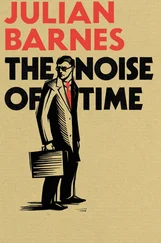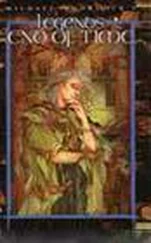Mach’s idea suggests that the Newtonian way of thinking about the workings of the universe, which is still deep-rooted, is fundamentally wrong. The Newtonian scheme describes an ‘atomized’ universe. The most fundamental thing is the containing framework of space and time: that exists before anything else. Matter exists as atoms, tiny unchanging masses that move in space and time, which govern their motion. Except when close enough to interact, the atoms move with complete indifference to one another, each following a straight and lonely path through the infinite reaches of absolute space. The Machian idea takes the power from space and time and gives it to the actual contents of the universe, which all dance in their motions relative to one another. It is an organic, holistic view that knits the universe together. Very characteristic is this remark of Mach in his The Science of Mechanics (pp.287-8):
Nature does not begin with elements, as we are obliged to begin with them. It is certainly fortunate for us that we can, from time to time, turn aside our eyes from the overpowering unity of the All and allow them to rest on individual details. But we should not omit, ultimately to complete and correct our views by a thorough consideration of the things which for the time being we have left out of consideration.
Mach himself made only tentative suggestions for a new relative mechanics, but his remarks caught the imagination of many people, above all Einstein, who said that Hume and Mach were the philosophers who had influenced him most deeply. Einstein spent many years trying to create a theory that would embody Mach’s principle, and initially believed that he had succeeded in his general theory of relativity. That is why he gave it that name. However, after a few years he came to have doubts. Eventually he concluded that Mach’s idea had been made obsolete by developments in physics, especially the theory of electro-magnetism developed by Faraday and Maxwell, which had introduced new concepts not present in Newton’s scheme.
Throughout the twentieth century, physicists and philosophers discussed Mach’s principle at great length, without coming to any conclusion. It is my belief that the problem lies in Einstein’s highly original but indirect approach. Mach had not made a really clear proposal, and Einstein never really stopped and asked himself just what should be achieved by Mach’s principle. I shall consider this in Part 3, but I need to anticipate a small part of the story in order to justify Part 2. Einstein’s theory is rather complicated and achieves several things at once. It is not easy to separate the parts and see the ‘Machian’ structure. In my opinion, general relativity is actually as Machian as it could be. What is more, it is the Machian structure that has such dramatic consequences when one tries to reconcile the theory with quantum mechanics. If, as I believe, the quantum universe is timeless, it is so because of the Machian structure of general relativity. To explain the core issues, I need a simplified model that captures the essentials. This Part 2 will provide. It will also provide a direct link between the great early debate about the foundations of mechanics and the present crisis of quantum cosmology. Two key issues are still the same: what is motion, and what is time? It will also enable me to explain the main work in physics with which I have been involved, and make it easier for you to see why I have come to doubt the existence of time.
Science advances in curious ways, and scientists are often curiously unconcerned with foundations. Descartes was one of the greatest philosophers, yet in that first book in 1632 he never gave a moment’s thought to the definition of motion. We are so used to living on the solid Earth that it seems unproblematic to say that a body moves in a straight line. If the Inquisition had not condemned Galileo, Descartes would never have argued for the relativity of motion. But for the inconsistency of his system, Newton would not have made an issue out of absolute space and time. He would not have devised the bucket argument, Mach might never have had his novel idea, and Einstein would not have been inspired to his greatest creation.
Had the Inquisition condemned Galileo a few months later, Descartes would have published his ideas in their original form – and general relativity might never have been found.
AN ALTERNATIVE ARENA
I would like to say a bit more about my own personal development, which as the book progresses will help you to understand why I am so deeply convinced of the need to have a new concept of time. In the very first days after my trip to the Bavarian Alps, while thinking hard about time, I came across Mach’s book. Like so many others, I was captivated by his idea about inertia. His comments on time also encouraged me greatly: ‘It is utterly beyond our power’, he said, ‘to measure the changes of things by time. Quite the contrary, time is an abstraction, at which we arrive by means of the changes of things.’ This was just the conclusion I had reached. A year or so later, after I had decided to study the foundations of physics, I started to read the papers Einstein had written when he was creating general relativity. Comparing them with what Mach had written, I came to the conclusion that Einstein had simply not set about the problem in the right way: he had not attacked it directly. It seemed to me necessary to go back to first principles.
It was six or seven years before I came to form really clear ideas. I eventually concluded that what was needed above all was a new arena in which to describe the universe. I arrived at the notion of Platonia (or, as I originally called it, the relative configuration space of the universe). The argument was quite simple. First, it is a fact that we orient ourselves in real life by objects we actually see, not by invisible space (see the Notes on the previous chapter). Things are the signposts that tell us where we are. There is also the fortunate fact that we live on the nearly rigid Earth. We can orient ourselves by means of just a few objects fixed on its surface, say church spires when hiking in the English countryside. Always there, the Earth provides a natural background. Motion seems to take place in a framework. But imagine what life would be like if we lived on a jellyfish!
The fact is that we live in a very special location. Only the tiniest fraction of matter in the solar system, let alone the universe, is in solid form. Imagine that we lived in an environment much more typical of the universe – in space. To simplify things, let there be only a finite number of objects, all in motion relative to one another. At any instant there are certain distances between these other objects and us. There is nothing else. In these circumstances, what would be the natural way to answer what is always a fundamental question: where are we? We have no other means of saying where we are except in terms of our distances to other objects. What is more, it would be artificial to choose just a few of them to locate ourselves. Why these rather than those? It would be much more natural to specify our distances to all objects. They define our position. This conclusion is very natural once we become aware that nothing is fixed. Everything moves relative to everything else.
Taking this further, thinking about the position and motion of one object is artificial. We are part of Mach’s All, and any motion we call our own is just part of a change in the complete universe. What is the reality of the universe? It is that in any instant the objects in it have some relative arrangement. If just three objects exist, they form a triangle. In one instant the universe forms one triangle, in a different instant another. What is to be gained by supposing that either triangle is placed in invisible space? The proper way to think about motion is that the universe as a whole moves from one ‘place’ to another ‘place’, where ‘place’ means a relative arrangement, or configuration, of the complete universe.
Читать дальше












